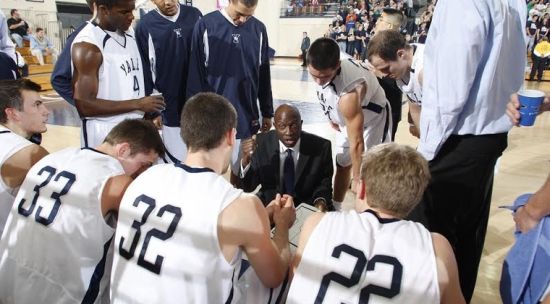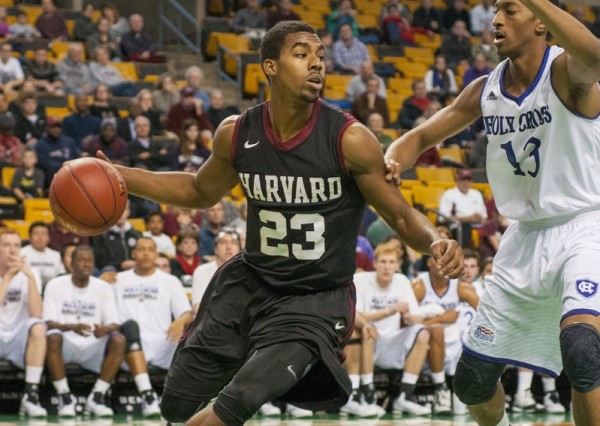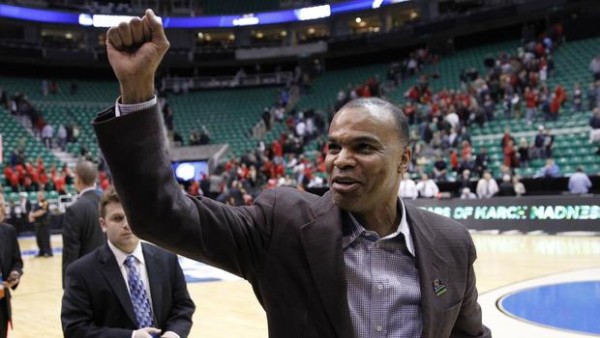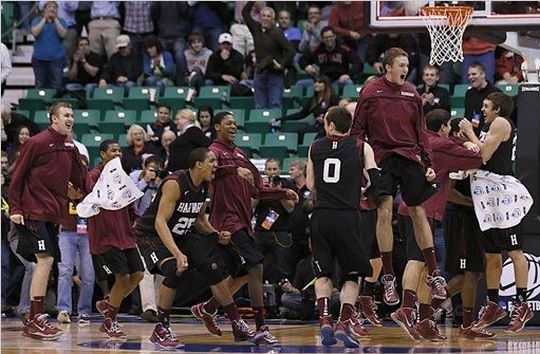Rushed Reactions: #4 North Carolina 67, #13 Harvard 65
Posted by Matt Patton on March 19th, 2015
Rush the Court will be providing wall-to-wall coverage of each of the NCAA Tournament from each of the 13 sites this year. Follow our NCAA Tourney specific Twitter accounts at @RTCeastregion, @RTCMWregion,@RTCsouthregion and @RTCwestregion.
Three Key Takeaways.
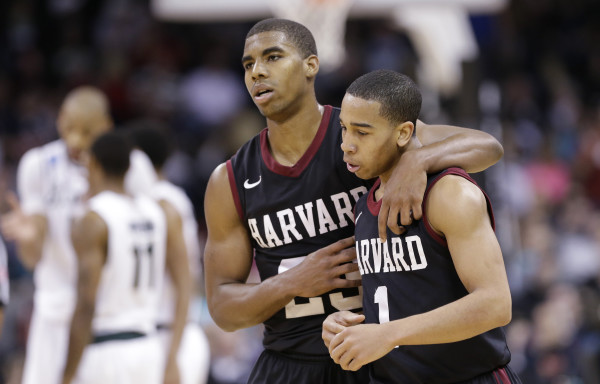
Wesley Saunders and Siyani Chambers couldn’t quite will Harvard to victory. (AP Photo/Elaine Thompson)
- Harvard had a shot to win. In the final 20 seconds Harvard had multiple shots to win. It’s fitting that those shots came from Siyani Chambers and Wesley Saunders. They didn’t drop, of course, but after being down as many as 14 points in the second half, it showed serious resilience on Harvard’s part to get back into the game and have a realistic chance to win. Harvard did it by valuing possessions and making free throws. That sounds simple, but by not making mistakes, Harvard kept the game close down the stretch. In the second half, Harvard also did a much better job in crashing the offensive glass (amazingly, without also hemorrhaging points in transition). After a disappointing middle of the season this year, Tommy Amaker’s team looked every bit the Top 25 squad it were projected as early in the year.
- Rebounding. Following a slow Harvard run to cut a double-digit deficit to a single possession, North Carolina looked like it might win by 20 points. The turn came with 2:03 left in the first half, as Isaiah Hicks (who quietly had a terrific game) got fouled and made a jumper to put North Carolina up by seven. He missed the free throw, but the Tar Heels got the offensive board and Kennedy Meeks was fouled as well. Meeks made one of two, but JP Tokoto grabbed an offensive board and Hicks hit another shot to push the lead out to 10. Without Harvard so much as touching the ball during that series, North Carolina went on a 5-0 run.
- Justin Jackson and Marcus Paige play hero. After onions from Chambers put the Crimson up two, it looked like North Carolina might wilt under the pressure. Instead, Jackson hit a beautiful floater to tie it up at 65. After Chambers missed his shot on the other end, Paige pushed it ahead for a Jackson dunk that turned out to be the game-winning shot. Even before that run, Paige had hit a shot that looked like the dagger when he sank a contested three to put North Carolina up by four with 3:21 left. People will say North Carolina tried to lose this game, but the fact is that the Heels had to make plays to win it. And they did.
Star of the Game: Wesley Saunders finished the game with 26 points, five assists and four boards. He played all 40 minutes, making plays off screens and off the dribble. JP Tokoto had the unfortunate assignment of trying to guard him. The Tar Heel excelled in keeping Saunders from getting the ball, but he struggled when Harvard ran screens for him. In the last game of Saunders’ career, I’m not sure there’s a player in the country who could have held him under 20 tonight. Saunders’ play was especially amazing in the first half of this one.





























